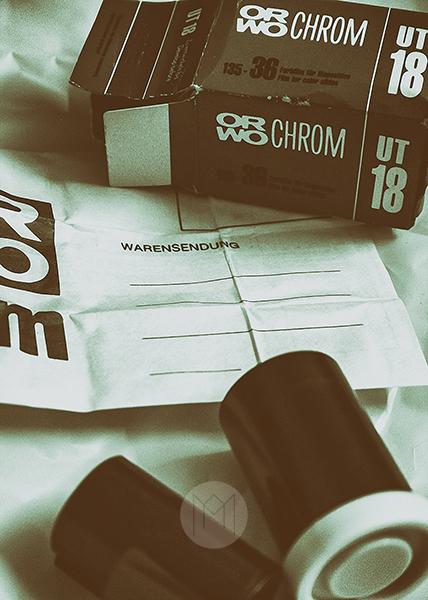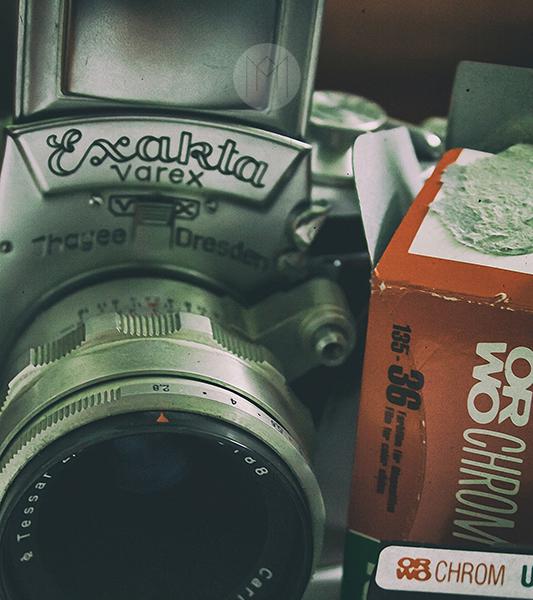A few years back,when I had just started playing with film, I had bought a set of 9 expired ORWO Chrom UT18 135-36mm film rolls, ordered via eBay (currently, a lot of 9 rolls costs anywhere from $20-30USD on eBay). I never did look up the results, reviews, history of the film before ordering this pack, and at 50iso as their rated film speed, I wasn’t expecting much either.

The first two, spent rolls of ORWO Chrom UT18
These were to be used with the Exakta Varex A, and B; having landed them, just before ordering the set of 9 UT18s. My thought was that I’d take the rolls, and the cameras out for a small spin of sorts. Checking if they’re were working fine or would require some adjustments here, and there. I really do not spend time trying to bracket new film rolls, etc. It is really a “Go!” from the get go.

The first two ORWO rolls were shot with the Exakta Varex VX
The first two rolls were shot as is, without much knowledge of sensitivity degradation over time, etc. I had to read the manuals for the Exaktas, because their functioning was something very alien, as compared to all the other film cameras I had (more on this in another post). Little did I know that both, the cameras, and the film would turn out to be my favorites to shoot with.
ORWO, And Agfacolor - A Short Lesson In Film History
The UT-18 was first released in 1968, and was kept in production until the 1980s. An East German company, ORWO has had a long history, one that dates back before the WWII. Once the war was over, the ORWO plant in East Germany, the Agfa Wolfen plant was where the world’s first color film with color couplers was developed - Agfacolor. In 1945, following the defeat of Nazi Germany, the plant was taken over by the US forces. All the patents, and other documents were handed over to the Western film makers like Ilford; including the documents, and processes regarding the Agfacolor.
The plant then was handed over to the Soviets, who consequently dismantled the plant, and moved the staff, and other required materials to the Soviet Union. Thus, ORWO was also responsible for forming the foundations for the Soviet color film industry.
These two events, along with the cold war created two different brands named Agfa. The Agfa Wolfen plant became the property of East Germany, and was given the rights to use the Agfa brand only within Eastern Europe. A newly re-established Agfa in West Germany, now had the rights to the brandname Agfa in the rest of the World. The East German Agfa company, and plant suffered due to this trade agreement. This led to the creation of the ORWO brand, A.K.A Original Wolfen. The ORWO brand was introduced in 1964.
Shooting with the ORWO Chrom UT18
It is an old film, with a speed of 50ASA or 18 DIN when it was originally released. I shot it at around 25ISO, when I was using it. I didn’t have a clue as to how age affects the sensitivity of the film, ergo the speed of the film; not until much later was I aware of this. I had a general notion that the film may be slower than rated for, and basically shot these rolls using the Sunny 16 rule, at 25ISO.
It’s a slide film, that was supposed to developed using the ORWO process. Not having access to the chemicals, I decided to cross process the first two rolls with C41. Subsequent, spent film rolls were cross processed using E6. The results were something surreal, surprising, and just plain awesome. I shot most of the ORWO Chrom UT18 rolls using the Varex VX (more on the camera soon).
ORWO Chrom UT18 + Exakta Varex VX - The Results:

After the first two rolls, subsequent ORWO Chrom UT18 rolls were developed using E6 process. This is the result.

After the first two rolls, subsequent ORWO Chrom UT18 rolls were developed using E6 process. This is the result.

Frames from the first two ORWO rolls, processed using the C41 process.

Frames from the first two ORWO rolls, processed using the C41 process.

Frames from the first two ORWO rolls, processed using the C41 process.

Frames from the first two ORWO rolls, processed using the C41 process.
